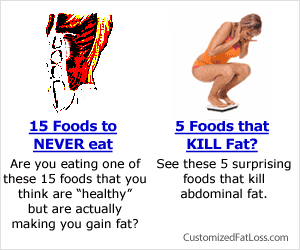Monitoring Weight Loss
Quite often, after putting in laborious weeks in the gym to try and lose some weight, we are disappointed by the numbers staring back at us from the scale. WHY can I not lose weight after all of this? If this sounds a little too familiar to you then don’t worry; it’s probably just a simple case of not using all the right tools to track your progress.
Different weight-loss goals also have different needs. And even these come into play when you are trying to track your progress. For instance, if you are trying to perfect your hour-glass figure without really losing much weight, neither scales nor body fat percentage will be able to help you out. It thus becomes very important to use multiple methods to track your progress through your routine.
Measurements
Many people often forget the basics and some underestimate their effectiveness. Get the measuring tape, dust it off and put it to good use. Measure not only your target areas, but everything that you can. For instance, measure the bust (around the fullest part), chest (right under the bust), waist, hips, upper arms, thighs, calves and forearms. Remember that as much as we might be trying to work out a specific part of a body, other parts get affected too. So this way, you will soon realize which parts of your body are responding to your efforts and to what extent.
Body Fat
The entire story is not told by the scales alone. Some people have heavier bones, some are built broader while some might actually have more lean tissue than normal. Measuring your body fat percentage gives you a fairly accurate view of how much of your body is really made up of non-essential fats- those that need to be targeted. With a simple set of body fat calipers, one can easily measure and calculate the body fat percentage.
Scales
Though scales are not the most reliable indicators, they have their benefits. Scales are the easiest available equipment that we can measure our bodies with. And when combined with the body fat percentage, give us a number that we can work better with. Simply multiply your weight (e.g. 150 pounds) with the non-essential fat percentage (e.g. 20%) to understand how much weight you need to lose (150 x 20% = 30 pounds).
Waist to Hip Ratio
With specific goals, arise specific measurement needs. In case you want to improve your hips, you might be better served with this method. It is very simple to do at home and all it needs is a measurement tape and a calculator.
Procedure:
Measure the waist at the narrowest point and the hip at the widest point, both in inches or centimeters.
Divide the waist measurement by that of the hip.
According to the National Institute of Diabetes, Digestive and Kidney Diseases (NIDDK), a ratio greater than 0.8 for women and greater than 1.0 for men puts them at an increased health risk due to their fat distribution.
Clothes
We all have that pair of jeans that fit us two months ago and don’t anymore, or the sleeves of the top that fit too tight now. These and other clothes can be very strong indicators of our progress. Remember how certain pieces of clothing fit you and you won’t need anything else to tell you that you’re on the way to that bikini body.
Photographs
Snap a picture of yourself every week in a specific pose and compare these snaps over a period of time. And soon your camera will become a better friend than your mirror.
Additional Tips
Perform these measurements in the nude or with minimal clothing on.
Perform the checks at the same time of the day (ideally first thing in the morning) to avoid errors.
For females, keep in mind the extra water your body retains during your periods.
Keep a tabulated record of all your readings.
Do not check your progress daily. Do it every week or even every month. The body does not respond as fast as we might want it to.
Hannah Wright
For more information on how to lose weight visit http://loseweightmystyle.com






-SMALL.gif)
